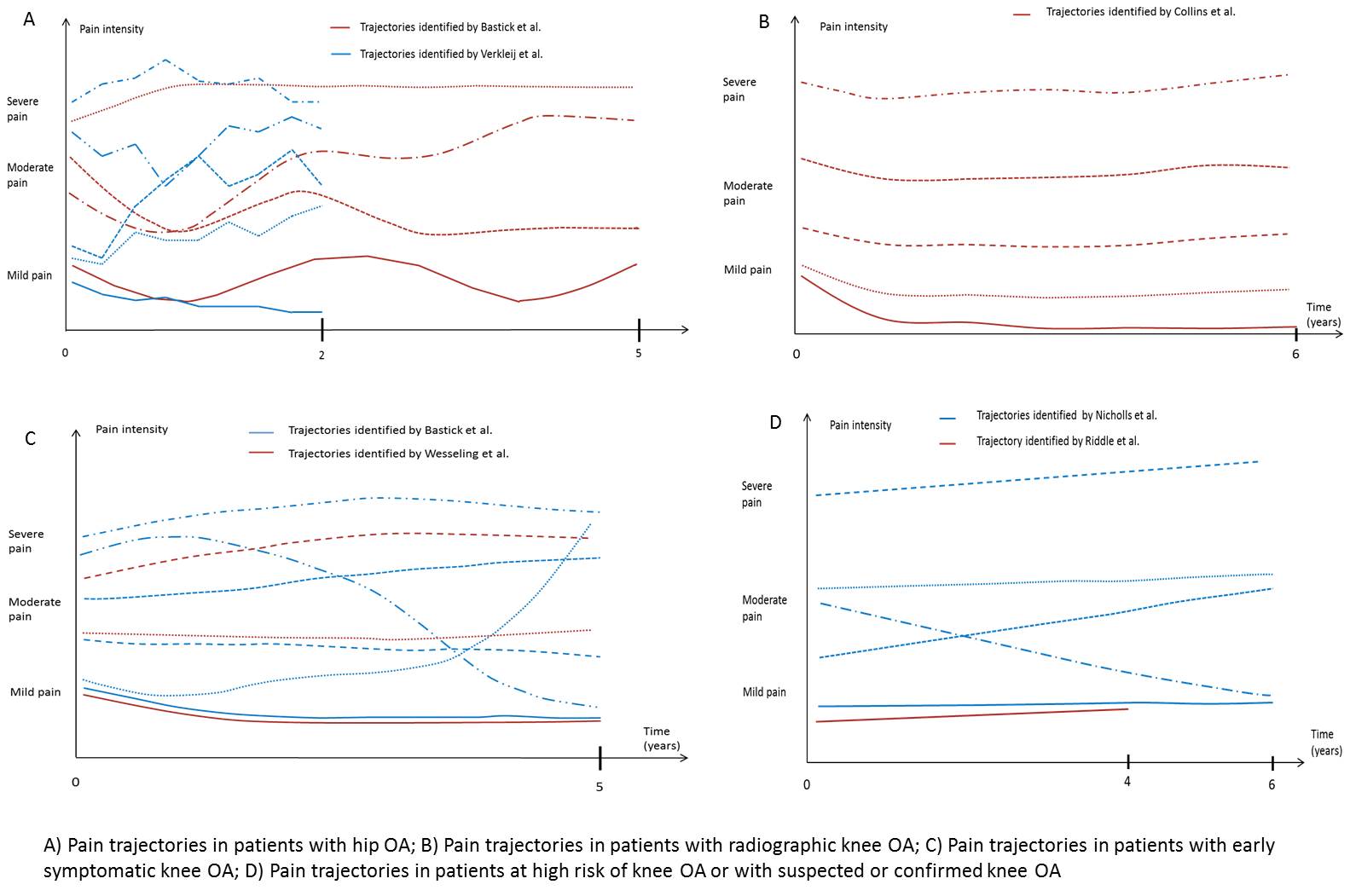Session Information
Date: Monday, November 6, 2017
Title: Epidemiology and Public Health Poster II: Rheumatic Diseases Other than Rheumatoid Arthritis
Session Type: ACR Poster Session B
Session Time: 9:00AM-11:00AM
Background/Purpose: The aims of this review were to summarize the literature on the trajectories of clinical outcomes in knee and hip OA, to describe the distinct trajectories for each outcome and to collect the predictive factors associated with these trajectories.
Methods: The Medline database was searched for relevant studies. Selection criteria were: i) patients >= 18 years old, ii) patients at high risk of, or diagnosed with, knee or hip OA, iii) studies aiming to identify homogeneous subgroups with distinct trajectories of clinical outcomes, iv) methodology and analysis designed to identify trajectories (longitudinal design and repeated measures). Articles selection was made independently and in duplicate by two reviewers while the final selection was made independently by three reviewers based on the full text.
Results: Of the 3867 abstracts retrieved, 37 studies met inclusion criteria among which 15 other studies analyzed trajectories before surgery. The other 22 studies focused specifically on the course of clinical outcomes after hip or knee arthroplasty. The most frequent outcome reported in the papers was pain (28 studies) while 19 studies reported results on function, 5 on mental health, 1 on stiffness, 3 on social participation and 1 on activity limitation. In the cohort studies without surgery, hip pain trajectories were divided in stable mild, moderate and severe pain. 3 additional subgroups included patients who underwent a moderate pain regression, oscillated between moderate and severe pain levels or highly progressed over time (Fig). A low educational level, high body mass index (BMI), an impaired physical function WOMAC score, high Kellgren (KL) grade for the hip, a limited flexion and internal rotation of the hip and concurrent back and trochanteric pain were associated with the membership in the severe pain trajectory. For the knee joint, the number of trajectories identified in the literature was between 1 and 6. A “no pain”, a mild pain, a moderate pain and a severe pain trajectories were identified as well as pain progression (moderate or severe worsening) or regression (major or moderate improvement) trajectories. Patients belonging to the severe pain trajectory were more likely to be male, have a younger age , a low educational level, a low social class, a high BMI, a high number of comorbidities, a high WOMAC physical function score, a high KL grade, higher levels of anxiety and depression, and a poorer general health.
Conclusion: This review highlighted the high heterogeneity across studies in terms of numbers of trajectories retrieved, especially for the pain outcomes. Nonetheless, some predictive factors of membership in a severe pain trajectory have been identified and these findings could be an aid to an early identification of patients with a high risk of clinical worsening.
To cite this abstract in AMA style:
Wieczorek M, Rat AC, Guillemin F, Rotonda C. What Have We Learned from Trajectory Analysis of Clinical Outcomes in Osteoarthritis? [abstract]. Arthritis Rheumatol. 2017; 69 (suppl 10). https://acrabstracts.org/abstract/what-have-we-learned-from-trajectory-analysis-of-clinical-outcomes-in-osteoarthritis/. Accessed .« Back to 2017 ACR/ARHP Annual Meeting
ACR Meeting Abstracts - https://acrabstracts.org/abstract/what-have-we-learned-from-trajectory-analysis-of-clinical-outcomes-in-osteoarthritis/

